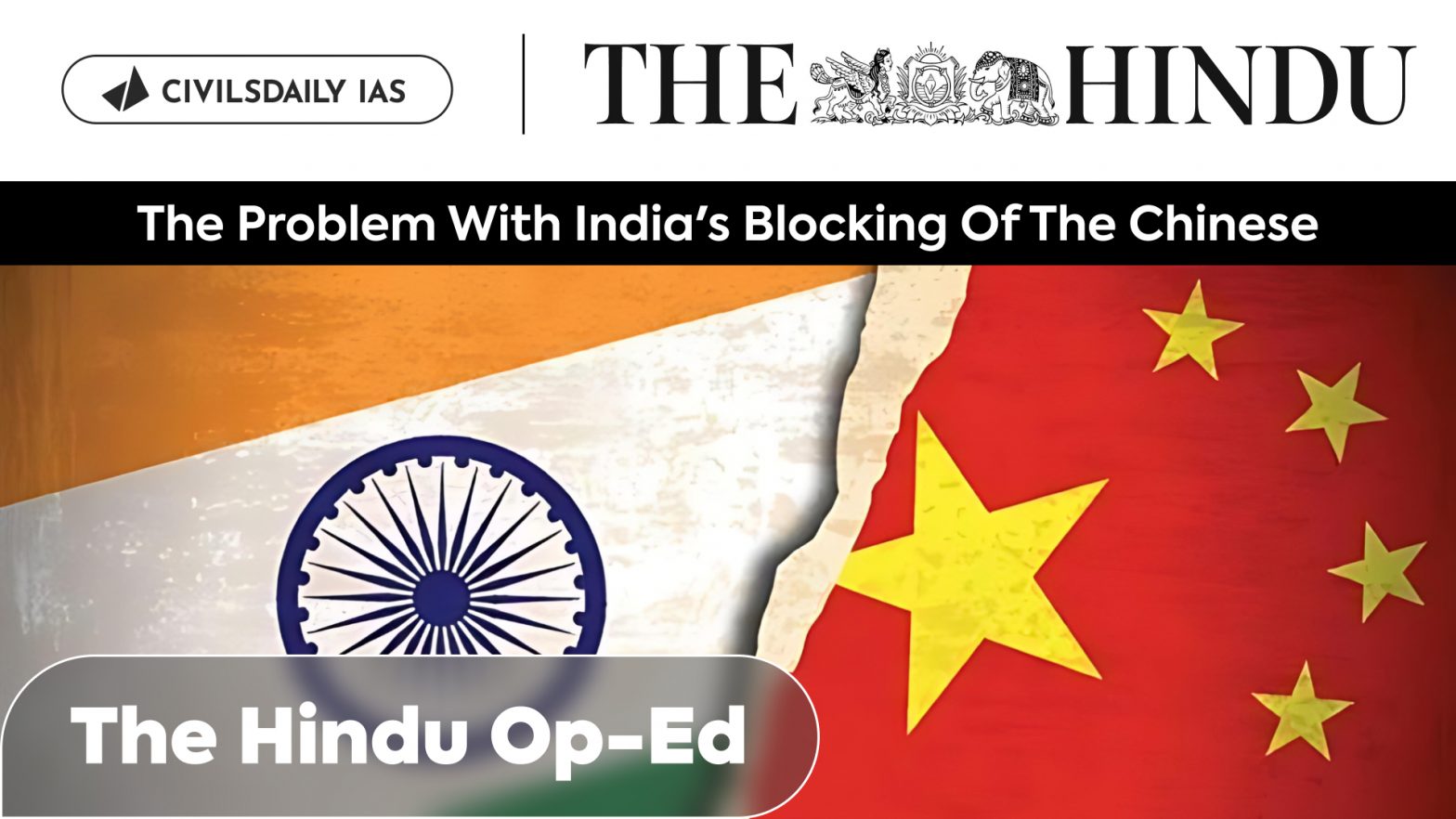| PYQ Relevance: Mains: Q1 China is using its economic relations and positive trade surplus as tools to develop potential military power status in Asia’, In the light of this statement, discuss its impact on India as her neighbour. (UPSC IAS/2021) Q2 With respect to the South China sea, maritime territorial disputes and rising tension affaire the need for safeguarding maritime security to ensure freedom of navigation and ever flight throughout the region. In this context, discuss the bilateral issues between India and China. (UPSC IAS/2014) Prelims: Q ‘Belt and Road Initiative’ is sometimes mentioned in the news in the context of the affairs of (2016) (a) African Union (b) Brazil (c) European (d) Union China |
Note4Students:
Prelims: Bordering countries with China;
Mains: Dependency on Chinese technician;
Mentor comments: Chinese technicians are vital for the Indian economy as they help bridge significant skill gaps in various industries, including manufacturing and technology. Their expertise is crucial for effectively operating Chinese machinery, which many Indian businesses have acquired but cannot utilize efficiently without skilled personnel. This dependency is highlighted by the urgent need for faster visa approvals for Chinese experts, as delays have led to substantial production losses, estimated at $15 billion over recent years. Integrating their knowledge is essential for enhancing productivity and achieving India’s manufacturing ambitions.
Let’s learn!
__
Why in the News?
Indian authorities plan to increase visas for Chinese technicians, acknowledging a significant skill gap between them and Indian workers, which is crucial for enhancing productivity in various industries.
Dependency on Chinese Technicians
- Skill Gaps: Indian businesses are facing a substantial skill deficit compared to their Chinese counterparts, which hampers productivity and the effective use of advanced machinery.
- Declining Visa Issuance: The number of visas issued to Chinese nationals has drastically decreased from approximately 200,000 in 2019 to just 2,000 in 2024, largely due to geopolitical tensions following border clashes in 2020.
- This reduction has created a bottleneck in the manufacturing sector, leading to estimated production losses of around $15 billion over the past four years.
- Government Response: In light of these challenges, Indian authorities are working to expedite the visa process for Chinese technicians, aiming to reduce processing times from several months to about 30 days.
Importance of Foreign Knowledge Integration:
- Role of Foreign Knowledge in Development: Foreign knowledge is crucial for economic development but is most effective when combined with a well-educated domestic workforce. This integration enhances the ability to utilize foreign expertise effectively.
- Korea’s Successful Model: In the 1980s, South Korea leveraged foreign technology by purchasing machines to dismantle and reverse engineer them.
- This was possible due to a strong educational foundation that had been established over three decades, allowing minimal reliance on foreign assistance.
- China’s Strategic Approach: China began its rapid economic growth in the early 1980s, despite having a weaker educational base than Korea. However, the quality of primary education during the Communist era prepared China for development.
- Deng Xiaoping’s initiatives, including sending policymakers on international study tours and attracting foreign investors, facilitated the absorption of global knowledge.
- India’s Educational Challenges: India has focused on building school infrastructure and increasing enrollment, but the quality of education remains low.
- Only about 15% of Indian students possess the basic skills necessary for participation in the global economy, compared to 85% of Chinese students.
- Global Competitiveness: China’s performance in international assessments, such as the Programme for International Student Assessment (PISA), has consistently improved, with Chinese students outperforming their peers globally.
- In contrast, India’s participation in PISA ended after a poor showing in 2009, highlighting a significant gap in educational outcomes.
Red Queen Race:
- Fundamental lesson from the Red Queen: The phrase “You must run twice as fast as you can to stay in the same place” illustrates the necessity for continuous improvement and adaptation in the face of competition, especially in the context of global technological advancements.
- China’s educational advancements: Chinese universities are now among the world’s best, particularly in fields like computer science and mathematics, reflecting a strong emphasis on integrating foreign knowledge with domestic education.
- Scientific progress: Chinese scientists are making significant strides in applied sciences relevant to industrial progress, positioning China as a leader in electric vehicles, solar technology, and artificial intelligence.
- Western response to competition: Instead of addressing deficiencies in their education systems, Western leaders are resorting to protectionist measures against Chinese imports, which may not effectively resolve underlying issues in their own educational frameworks.
- India’s educational challenges: Indian elites appear to overlook the lessons from China, with economists suggesting a shift towards technology-enhanced service exports while ignoring the need for a robust base of high-quality education to support such initiatives.
Way forward:
- Streamline Visa Approval Processes: India should expedite the visa application process for Chinese technicians by implementing a fast-track system that reduces approval times to less than a month.
- Enhance Domestic Education and Training: To complement foreign expertise, India must invest in improving its educational system, focusing on vocational training and technical skills.

